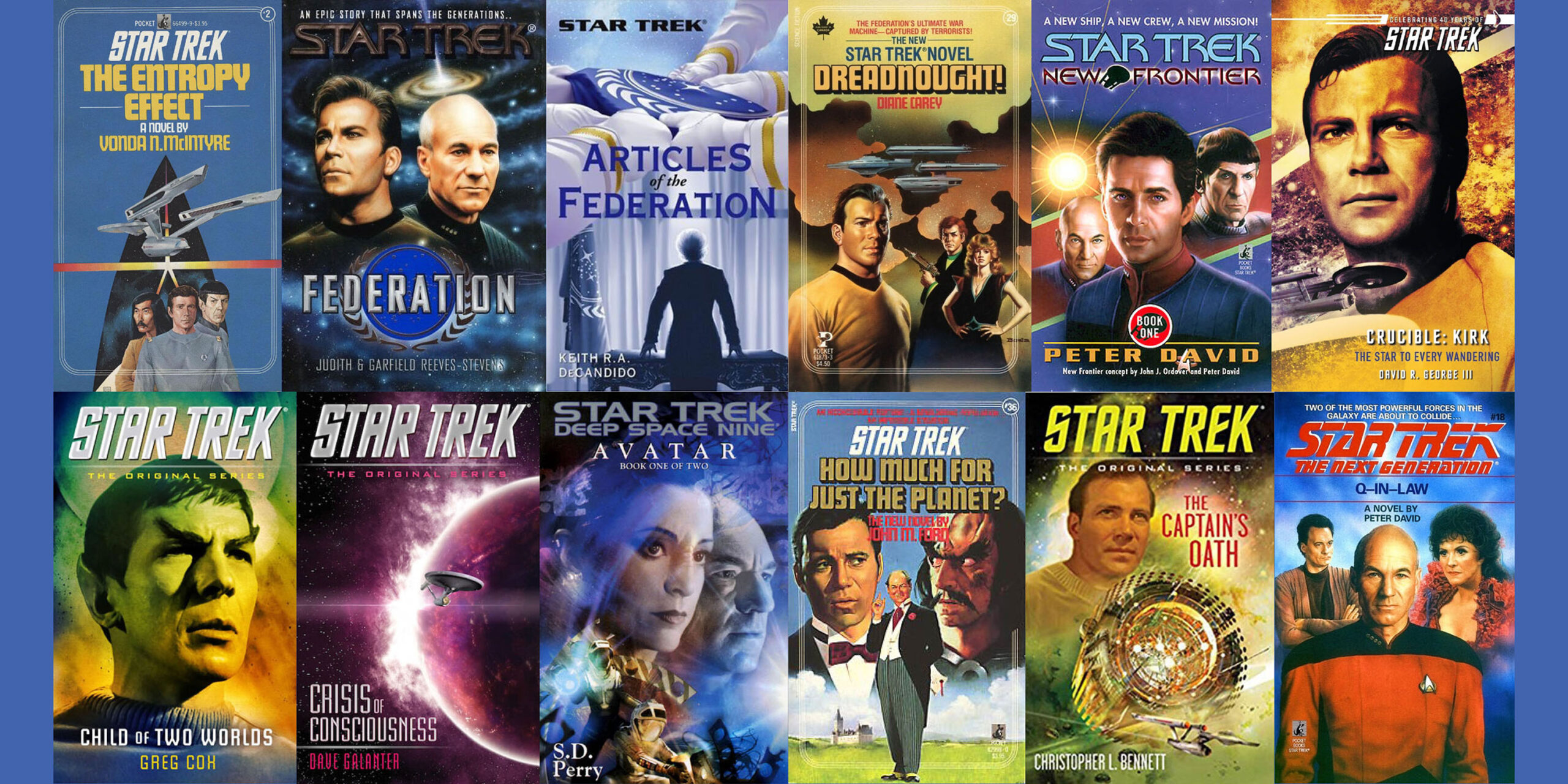
Star Trek: Serpents in the Garden

But the episode ends on a shockingly unresolved note. Kirk seems to, at the end, realize that he himself is the serpent in the garden of Eden, and that an escalation of violence will not solve anything. But then the Enterprise just leaves and nothing is resolved! We never learn what happened down on the planet. Were the Klingons exposed and forced to leave, or did they stay? Were the Hill People and the Villagers able to make peace, or did they use their newfound weapons to continue to war with one another? And what of Kirk’s friend, Tyree, the Hill People’s leader? When last we saw him, his wife had just been murdered by the Villagers, and this formerly peace-loving man had run off with murderous vengeance in mind. Whatever happened to him?? “A Private Little War” always felt to me like a great episode missing its final ten minutes.
As such, it was ripe for a follow-up, and I quite enjoyed Jeff Mariotte’s “Serpents in the Garden.” Set a few months prior to the events of Star Trek: The Motion Picture, Kirk returns to Neural to see what has happened there and to try to undo some of the mistakes he’d made in his previous visit. As might have been expected, things have gotten worse on Neural, not better, and the Klingons are more of a threat there than ever.
I enjoyed reading this fun extrapolation of what might have happened on Neural after the credits on “A Private Little War” rolled. It’s great to see Tyree again, and I enjoyed the way Mr. Mariotte developed several new characters among the Hill People, as well as how he brought back the Villager leader Apella and also the Klingon Kurt. There have been some previous great Trek stories exploring the potentially-negative ramifications of Captain Kirk’s actions in certain Original Series episodes, and Serpents in the Garden fits well into this Trek sub-genre. (One of my very favorites of these types of stories is also one of the first non-televised Star Trek stores I ever read, a sequel to “The Apple” by Michael Carlin, Tom Sutton, & Ricardo Villagran that appeared in issues #43-45 of DC Comics’ first Star Trek comic book series.)
Mr. Mariotte’s writing style is a little different in feel and tone from the more standard “house style” of Pocket Books’ Trek books these days. It takes a little getting used to. I thought the novel began rather abruptly, with Kirk seeming to just hop off on this secret mission without much thought (and with only three previously unknown low-ranking Starfleet officers to help him). Why wouldn’t Kirk want a starship around to support him? And if he felt that was impossible (for fear of provoking the Klingons), why wouldn’t he take one or more of his comrades from the Enterprise along to help him? This set-up didn’t quite work for me, but thankfully once Kirk was back on Neural (which happens very quickly), I was far more interested in the story Mr. Mariotte was telling.
There are still some flaws. Everything gets resolved at the end a little too easily for my tastes. (Apella and Tyree are able to calm down a vicious mob-like warfare very easily, and the Klingon Krell seems remarkably cooperative when Kirk hijacks his ship). And while I was happy that Mr. Mariotte did check in with Scotty, Chekov and Uhura periodically during the novel (though where was Sulu??), those chapters felt like filler to me, because they didn’t really have anything to do in connection with the story. (As I was reading the book I felt sure, at least, that Scotty, Chekov and Uhura would be involved in the action at the end when they finally arrived at Neural, as that would have given us a reason to have been following them up to that point. But in the end that didn’t wind up being at all the case.) The book also seems to let Kirk off the hook a bit too easily. By the end of the book Kirk seems satisfied that he HAD made the right decision to arm the Hill People, though I’m not convinced. And there’s something a little unsettling about Kirk’s walking away from his secret follow-up mission to Neural okey dokey, while all three younger officers he brought with him died horribly. (I know Red Shirts died in a lot of Original Series episodes, but it feels unbalanced here; I’d have liked to see there be a consequence to Kirk for these deaths, or at least to have seen him show a little more remorse or regret.)
I was interested in this novel’s handling of the Organians. These powerful aliens were never seen again after their one appearance in the Original Series episode “Errand of Mercy,” though the Organian Peace Treaty was often mentioned in future episodes as well Star Trek fiction set in this era. Some novels did address, head-on, that the Organians never reappeared, suggesting that they didn’t continue to intervene in the affairs of the Federation and the Klingon Empire. This book takes the approach that the Organians were continuing to enforce the treaty. (Or, at least, that they would in certain circumstances, if brought back into the situation by either the Federation or Klingon governments. They didn’t seem to be aware or interested/able to counteract the Klingons’ clear violation of the treaty on Neural as things stood.) This is a somewhat unsatisfying approach (because the novel has to find ways to explain why the Organians haven’t yet done anything to stop the Klingons’ treaty-violating interference on Neural), but also one that I entirely understand, because other stories have established that the Organian Peace Treaty WAS the thing keeping the Federation and Klingons from going to war during this time period. Mr. Mariotte was in a bit of a Kobayashi Maru situation here, and I think he handled things as best he could have.
This book wasn’t quite a home run for me, but it was still a fun read, and I’m delighted that someone finally saw fit to follow up on the bizarrely unresolved ending of “A Private Little War.”
Click here to purchase my “Maclunkey” Star Wars/Highlander mash-up t-shirt!
Please support MotionPicturesComics.com by clicking through one of our Amazon links the next time you need to shop! As an Amazon Associate, I earn from qualifying purchases. That means I’ll receive a small percentage from any product you purchase from Amazon within 24 hours after clicking through. Thank you!
Previous Star Trek novel reviews:
Star Trek – Unspoken Truth , Troublesome Minds, Cast No Shadow, Excelsior: Forged in Fire, Allegiance in Exile, Legacies Book 1: Captain to Captain, Legacies Book 2: Best Defense, Legacies Book 3: Purgatory’s Key, The Face of the Unknown, From History’s Shadow, Elusive Salvation, Assignment: Eternity, The Rings of Time, The Weight of Worlds, No Time Like the Past, Foul Deeds Will Rise, The Antares Maelstrom, The Shocks of Adversity, Crisis of Consciousness, The Latter Fire
Star Trek: The Next Generation – A Time to be Born & A Time to Die, A Time to Sow & A Time to Harvest, A Time to Love & A Time to Hate, A Time to Kill & A Time to Heal, A Time for War, a Time for Peace, The Sky’s The Limit, Resistance and Q & A, Before Dishonor and Greater than the Sum, Destiny trilogy, A Singular Destiny, Losing the Peace, Immortal Coil, Cold Equations Book 1: The Persistence of Memory, Cold Equations Book 2: Silent Weapons, Cold Equations Book 3: The Body Electric, The Light Fantastic, Takedown, Armageddon’s Arrow, Prey Book 1: Hell’s Heart, Prey Book 2: The Jackal’s Trick, Prey Book 3: The Hall of Heroes, Headlong Flight, Hearts and Minds, Available Light, Collateral Damage
Star Trek: Deep Space Nine – DS9 relaunch overview, The Soul Key, The Never-Ending Sacrifice, Plagues of Night and Raise the Dawn, Section 31: Disavowed, The Missing, Sacraments of Fire, Ascendance, Force and Motion, The Long Mirage, Section 31: Control, Enigma Tales, Gamma: Original Sin
Star Trek: Voyager – Full Circle, Unworthy, Children of the Storm, The Eternal Tide, Protectors
Star Trek: Enterprise — Kobayashi Maru, The Romulan War: Beneath the Raptor’s Wing, The Romulan War: To Brave the Storm, Rise of the Federation: A Choice of Futures, Rise of the Federation: Tower of Babel, Rise of the Federation: Uncertain Logic, Rise of the Federation: Live By the Code, Rise of the Federation: Patterns of Interference
Star Trek: Titan – Book 1: Taking Wing, Book 2: The Red King, Book 3: Orion’s Hounds, Book 4: Sword of Damocles, Under a Torrent Sea, Synthesis, Fallen Gods, Absent Enemies (e-book), Sight Unseen, Fortune of War
Star Trek: Typhon Pact – Book 1: Zero-Sum Game, Book 2: Seize the Fire, Book 3: Rough Beasts of Empire, Book 4: Paths of Disharmony, The Struggle Within (e-book), Plagues of Night and Raise the Dawn, Brinkmanship
Star Trek: The Fall — Book 1: Revelation and Dust, Book 2: The Crimson Shadow, Book 3: A Ceremony of Losses, Book 4: The Poisoned Chalice, Book 5: Peaceable Kingdoms
Star Trek: New Frontier – Series overview, Stone & Anvil, After the Fall, and Missing in Action, Treason and Blind Man’s Bluff
Star Trek: Department of Temporal Investigations – Watching the Clock, Forgotten History, The Collectors (e-book), Time-Lock (e-book), Shield of the Gods (e-book)
Star Trek: The Lost Era – Book 1: The Sundered (2298), Book 2: Serpents Among the Ruins (2311), Book 3: The Art of the Impossible (2328-2346), The Buried Age (2355-2364), One Constant Star (2319)
Star Trek: Mirror Universe (Books 1 & 2) – Star Trek: Mirror Universe: Shards & Shadows – Star Trek: Mirror Universe: The Sorrows of Empire — Star Trek: Mirror Universe: Rise Like Lions – Star Trek: Myriad Universes (Books 1 & 2) – Star Trek: Myriad Universes: Shattered Light
Beyond the Final Frontier — Josh’s favorite Star Trek novels

